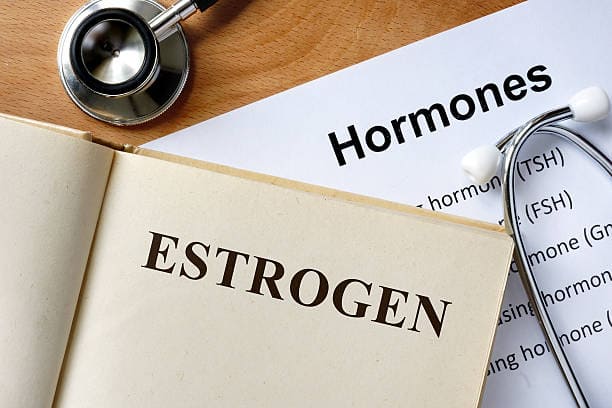Understanding Menstrual Pain: Menstrual pain, often referred to as dysmenorrhea, is a common phenomenon experienced by individuals with menstruating bodies. This discomfort typically occurs in the lower abdomen, but it can also radiate to the lower back and thighs. Menstrual pain is a regular part of the menstrual cycle for many people and can vary significantly in intensity and duration.
Causes of Menstrual Pain
The menstrual pain is primarily caused by the contractions of the uterus as it sheds its lining during menstruation. These contractions, triggered by hormone-like substances called prostaglandins, help expel the uterine lining. Higher levels of prostaglandins can lead to stronger and more painful contractions, contributing to more severe menstrual pain.
In addition to prostaglandins, other factors can exacerbate menstrual pain. These include:
- Hormonal Imbalance: Fluctuations in hormone levels, particularly estrogen and progesterone, can influence the severity of menstrual pain.
- Uterine Abnormalities: Conditions such as fibroids or polyps in the uterus can cause increased pain during menstruation.
- Endometriosis: A condition where the tissue similar to the lining of the uterus grows outside the uterus, often resulting in severe menstrual pain.
- Pelvic Inflammatory Disease (PID): An infection of the female reproductive organs can lead to inflammation and pain during menstruation.
- Stress and Lifestyle Factors: High levels of stress, poor diet, lack of exercise, and smoking can all contribute to increased menstrual pain.
Symptoms of Menstrual Pain
The symptoms of menstrual pain can vary from person to person. Common signs and symptoms include:
- Cramping: A dull or throbbing pain in the lower abdomen that can range from mild to severe.
- Back Pain: Pain in the lower back that may accompany abdominal cramping.
- Headaches: Some individuals experience headaches or migraines during menstruation.
- Nausea: Feelings of queasiness or even vomiting can occur in severe cases.
- Fatigue: Many people feel exhausted during their menstrual periods.
- Diarrhea or Constipation: Changes in bowel movements are not uncommon during menstruation.
Managing Menstrual Pain
Fortunately, there are several strategies for managing menstrual pain and reducing discomfort:
- Over-the-counter Pain Relief: Nonsteroidal anti-inflammatory drugs (NSAIDs) such as ibuprofen or naproxen can help alleviate menstrual cramps by reducing prostaglandin levels.
- Heat Therapy: Applying a heating pad or warm compress to the abdomen can relax the uterine muscles and provide relief from cramping.
- Exercise: Engaging in regular physical activity, such as walking or yoga, can help reduce menstrual pain by promoting circulation and releasing endorphins, which act as natural painkillers.
- Dietary Changes: Consuming a balanced diet rich in fruits, vegetables, whole grains, and lean proteins, while limiting caffeine and alcohol intake, may help alleviate menstrual pain.
- Stress Management: Practicing relaxation techniques such as deep breathing, meditation, or mindfulness can help reduce stress levels, thereby decreasing menstrual pain.
- Supplements: Some individuals find relief from menstrual pain by taking supplements such as magnesium, calcium, or omega-3 fatty acids.
- Medical Treatments: In cases of severe menstrual pain or underlying conditions such as endometriosis, medical interventions such as hormonal birth control, hormone therapy, or surgery may be necessary.
When to See a Healthcare Provider
While menstrual pain is common, severe or debilitating pain should not be ignored. It’s essential to consult with a healthcare provider if:
- Pain is Unmanageable: If over-the-counter medications and home remedies do not provide relief from menstrual pain.
- Interference with Daily Activities: If menstrual pain significantly impacts your ability to work, study, or engage in regular activities.
- Other Symptoms: If menstrual pain is accompanied by other concerning symptoms such as heavy bleeding, fever, or unusual vaginal discharge.
- New Onset: If you experience sudden onset of severe menstrual pain, especially if you are over the age of 25 and have not experienced such pain before.
A healthcare provider can conduct a thorough evaluation to determine the underlying cause of menstrual pain and recommend appropriate treatment options.
Conclusion
In conclusion, menstrual pain is a common yet often manageable aspect of the menstrual cycle. Understanding the causes and symptoms of menstrual pain can empower individuals to effectively manage their discomfort and improve their overall quality of life. By adopting lifestyle changes, utilizing home remedies, and seeking medical guidance when needed, individuals can navigate menstruation with greater ease and comfort. Remember, menstrual pain is a natural part of the reproductive process, but it should never be debilitating or ignored. Prioritizing self-care and seeking support from healthcare professionals can make a significant difference in managing menstrual pain effectively.

